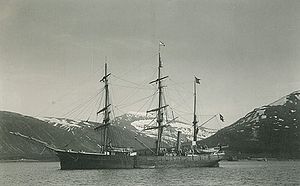
Alfred Gabriel Nathorst was a Swedish Arctic explorer, geologist, and palaeobotanist.

Svend Foyn was a Norwegian whaling, shipping magnate and philanthropist. He pioneered revolutionary methods for hunting and processing whales. Svend Foyn introduced the modern harpoon cannon and brought whaling into a modern age. He is also recognized as a pioneer who introduced sealing to Vestfold County.
MS Expedition is an expedition cruise ship owned and operated by the Canada-based G Adventures. She was built as a car/passenger ferry in 1972 by Helsingør Skibsværft og Maskinbyggeri A/S, Helsingør, Denmark as Kattegat for Jydsk Færgefart A/S. Subsequently, she sailed under the names nf Tiger for P&O Normandy Ferries, Tiger for Townsend Thoresen and Ålandsfärjan for Viking Line, prior to conversion into a cruise ship in 2008. The MS Expedition has the IMO number 7211074 and is ice-strengthened, having an ice class of 1B. There are two higher classes, being 1A Super and 1A.
The Possession Islands are a group of small islands and rocks extending over an area of about 7 nautical miles, lying in the western part of the Ross Sea, lying 5 nautical miles south-east of Cape McCormick, in Victoria Land, Antarctica. The Possession Islands were named by Captain James Clark Ross, Royal Navy, in commemoration of the planting of the British flag here on January 12, 1841.

Carl Anton Larsen was a Norwegian-born whaler and Antarctic explorer who made important contributions to the exploration of Antarctica, the most significant being the first discovery of fossils for which he received the Back Grant from the Royal Geographical Society. In December 1893 he became the first person to ski in Antarctica on the Larsen Ice Shelf which was subsequently named after him. In 1904, Larsen re-founded a whaling settlement at Grytviken on the island of South Georgia. In 1910, after some years' residence on South Georgia, he renounced his Norwegian citizenship and took British citizenship. The Norwegian whale factory ship C.A. Larsen was named after him.

Henrik Johan Bull was a Norwegian businessman and whaler. Henry Bull was one of the pioneers in the exploration of Antarctica.
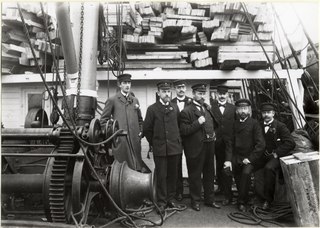
The Swedish Antarctic Expedition of 1901–1903 was a scientific expedition led by Otto Nordenskjöld and Carl Anton Larsen. It was the first Swedish endeavour to Antarctica in the Heroic Age of Antarctic Exploration.

Nils Otto Gustaf Nordenskjöld was a Swedish geologist, geographer, and polar explorer.
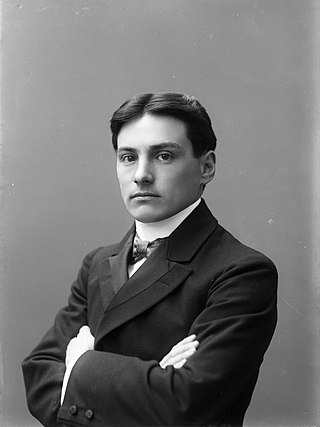
Alférez de NavíoJosé María Sobral was an Argentine explorer, geologist, naval officer and author who rose to prominence by participating in the Swedish Antarctic Expedition (1901–1904) becoming the first Argentine to overwinter in Antarctica. Later he pursued studies at Uppsala University becoming the first Argentine to obtain a geology degree. Sobral worked briefly as ambassador to Norway in 1930 before returning to Argentina to work at YPF.
Henrik Hesselman was a Swedish professor, foresters, and botanist.
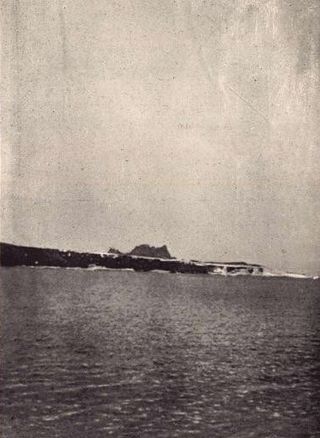
Foyn Island, also known as Svend Foyn Island, is the second largest island in the Possession Islands, East Antarctica, lying 6 kilometres (4 mi) south-west of Possession Island. An Adélie penguin rookery covers much of the island, which is often included in the itinerary of Antarctic cruises.

Belgica was a barque-rigged steamship that was built in 1884 by Christian Brinch Jørgensen at Svelvik, Norway as the whaler Patria. In 1896, she was purchased by Adrien de Gerlache for conversion to a research ship, taking part in the Belgian Antarctic Expedition of 1897–1901, becoming the first ship to overwinter in the Antarctic. In 1902, she was sold to Philippe, Duke of Orléans and used on expeditions to the Arctic in 1905 and from 1907 to 1909.

Vice Admiral Sir Georg Carl Amdrup, RN was a Danish naval officer, Vice Admiral and Greenland researcher.

Axel Hamberg was a Swedish mineralogist, geographer and explorer.
Oceanwide Expeditions is a Dutch company specializing in expedition-style voyages to Antarctica and the Arctic. Deploying its own fleet of ice-strengthened vessels, Oceanwide emphasizes small-scale, flexible tours that provide passengers close contact with polar wildlife, landscapes, and historical sites. Tours usually take place in regions only accessible by sea, with little to no infrastructure. The locations visited are first reached by ship, after which expedition guides take small groups of passengers to landing sites by way of Zodiac Milpro RIBs, enabling safe cruising and maximum shore time.
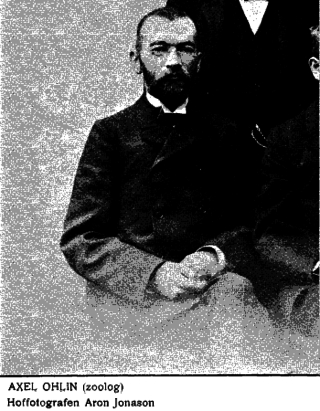
Axel Gabriel Ohlin was a Swedish zoologist and Arctic and Antarctic explorer.

Hallvard Ophuus Devold was a Norwegian Arctic explorer, trapper and meteorologist. He was instrumental in the attempt to establish Eric the Red's Land in 1931. His brother Finn Devold (1902–1977) shared his vision and helped to establish a Norwegian station at Finnsbu, SE Greenland.
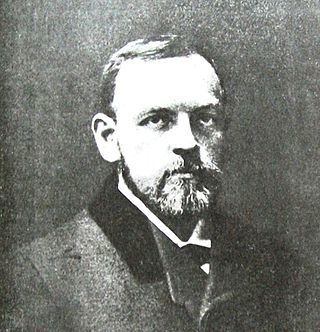
Between 1912 and 1914, plans were discussed between proponents in Sweden and Britain for a joint Anglo-Swedish Antarctic Expedition. The impetus for this enterprise came from the geologist and explorer Otto Nordenskjöld, who had led the 1901–03 Swedish Antarctic Expedition He wished to continue and extend the work begun there. The British involvement in the new venture arose because Nordenskjöld planned to finance it from the profits of a whaling company which he proposed to set up. For this, he needed to obtain a licence from the British authorities, who controlled all whaling activities in the sector of the Antarctic in which Nordenskjöld intended to operate.
